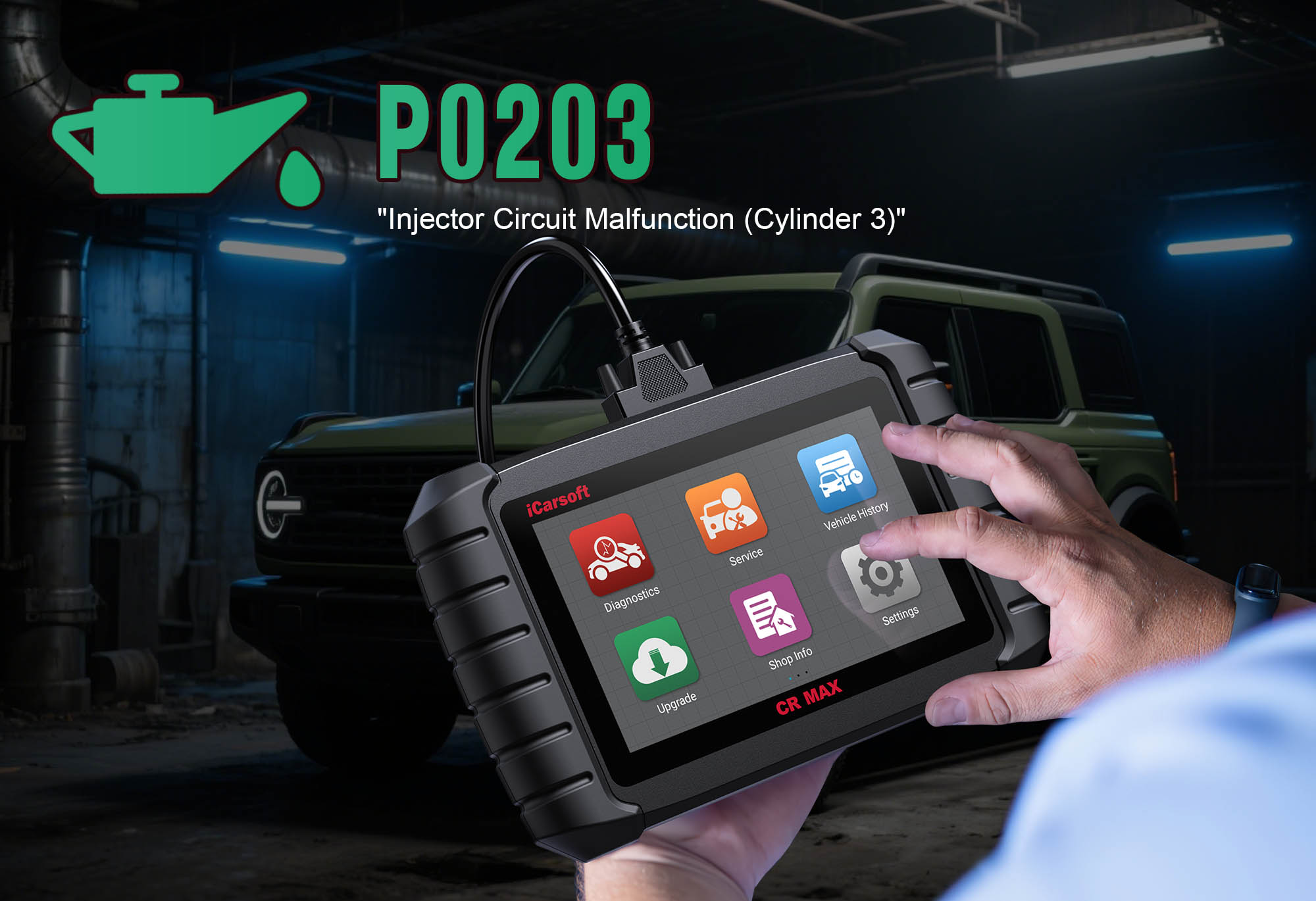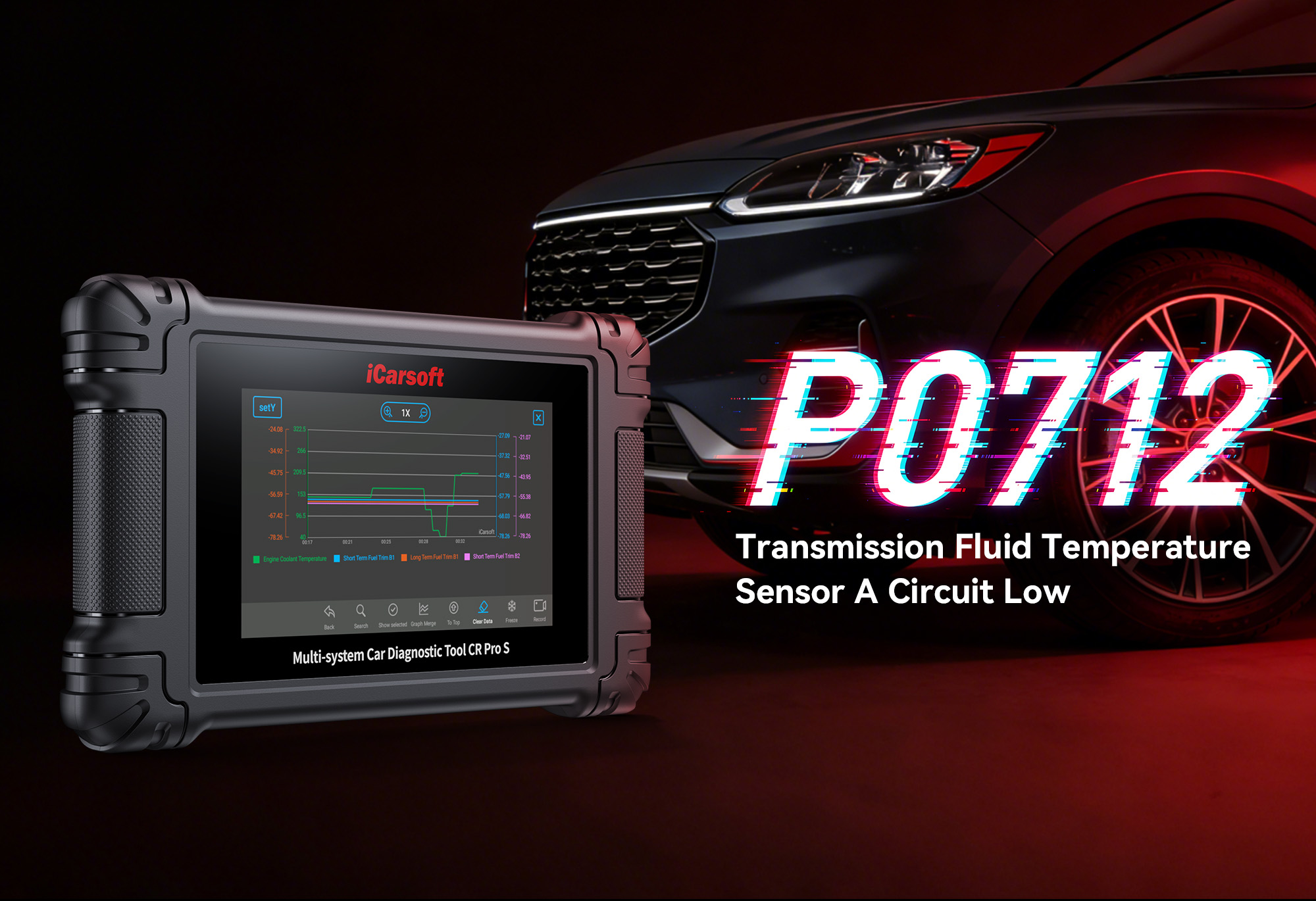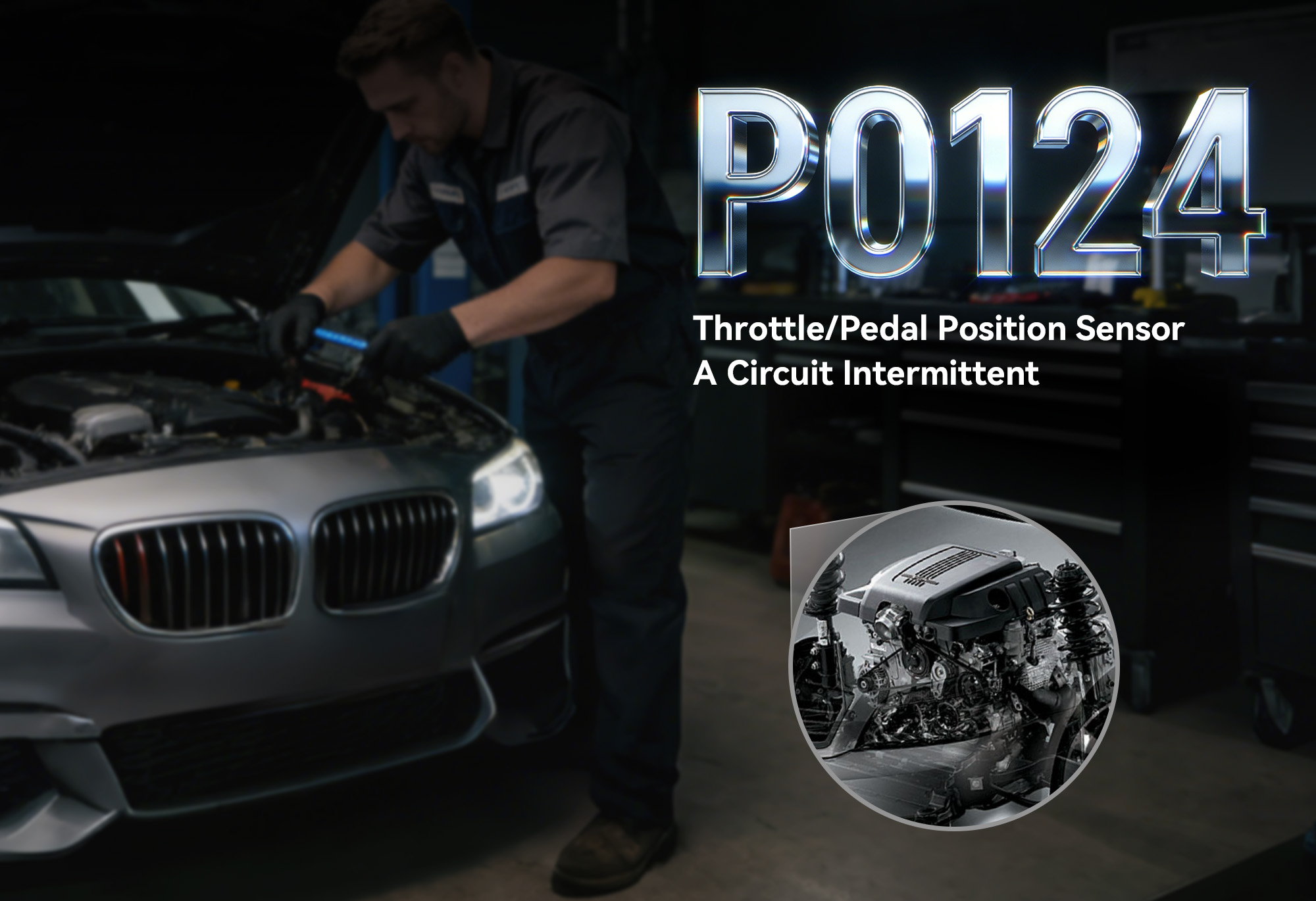Diagnose & Clear P0203 with iCarsoft CR MAX: Fix Cylinder 3 Injector Circuit Issues
If your check engine light comes on and a scan returns P0203, your vehicle is indicating a problem with its fuel injection system. This generic OBD-II code stands for "Cylinder 3 Injector Circuit Malfunction"—meaning the Engine Control Module (ECM) has detected an abnormal voltage or resistance in the circuit controlling the fuel injector for cylinder 3.
Fuel injectors are critical for precise fuel delivery, spraying atomized fuel into the combustion chamber at exact times. The ECM regulates each injector’s operation via an electrical circuit, ensuring proper fuel-air mixture for efficient combustion. When P0203 occurs, the cylinder 3 injector isn’t receiving the correct electrical signal, leading to misfires, rough idle, reduced power, and increased emissions.
Basic scanners might only identify "injector circuit fault" but can’t pinpoint whether the issue is a faulty injector, damaged wiring, or an ECM problem. The iCarsoft CR MAX solves this with cylinder-specific diagnostics, real-time injector pulse monitoring, and vehicle-specific wiring diagrams. Let’s walk through how to diagnose and resolve P0203.
Why It Matters
Ignoring P0203 disrupts your engine’s fuel delivery balance, leading to costly consequences. A malfunctioning cylinder 3 injector causes incomplete combustion, which wastes fuel (reducing economy by 10–20%) and floods the catalytic converter with unburned hydrocarbons. Over time, this can overheat and destroy the converter—an expensive repair costing $800–$1,500.
Persistent misfires from P0203 also damage engine components: unburned fuel washes oil from cylinder walls, accelerating piston ring wear and increasing the risk of bore scoring. Addressing P0203 promptly with the iCarsoft CR MAX not only restores performance but also protects your engine and emissions system from long-term damage.
Understanding P0203: Causes & Key Symptoms
To effectively address P0203, first break down the fuel injector system dynamics and its failure triggers:
Key Symptoms of P0203
-
Illuminated Check Engine Light: Activates when the ECM detects voltage outside the normal 8–14V range in the cylinder 3 injector circuit for 3+ consecutive seconds.
-
Engine Misfire: Cylinder 3 fails to ignite fuel, causing rough idle (shaking at stoplights), hesitation during acceleration, or vibration under load (e.g., climbing hills).
-
Reduced Power: Noticeable loss of performance, especially at higher RPMs—engine may feel "sluggish" when accelerating.
-
Increased Fuel Consumption: Unburned fuel from misfires forces the ECM to compensate with more fuel, lowering efficiency.
-
Catalytic Converter Risk: Unburned fuel overheats the converter, leading to a "rotten egg" smell (sulfur) or premature failure.
Common Causes of P0203
|
Cause
|
Description
|
|
Faulty Fuel Injector
|
Internal clogging, valve sticking, or coil failure in the cylinder 3 injector—prevents proper fuel spray or electrical response.
|
|
Wiring Issues
|
Damaged insulation, short circuits to ground/power, or corrosion in the injector’s wiring harness—disrupts voltage flow.
|
|
Loose Connections
|
Poor contact in the injector’s electrical connector (bent pins, dirt buildup) increases resistance and causes signal drops.
|
|
ECM Problems
|
Failed driver circuit in the ECM (controls injector activation) causes irregular voltage output to the cylinder 3 injector.
|
|
Fuel Contamination
|
Dirt, debris, or water in the fuel system clogs the injector’s nozzle or damages its internal components.
|
Why iCarsoft CR MAX Excels at Diagnosing P0203
Basic OBD-II scanners can’t isolate cylinder-specific injector issues, but the iCarsoft CR MAX is tailored to fuel injector diagnostics with these key features:
Cylinder-Specific Testing
Targets cylinder 3 directly with focused circuit analysis, avoiding guesswork across all injectors—saves time vs. generic tools.
Real-Time Injector Pulse Monitoring
Displays live voltage, current, and pulse width for the cylinder 3 injector—spots irregularities (e.g., no pulse, erratic voltage) instantly.
Injector Activation Tests
Manually triggers the cylinder 3 injector to check for audible operation (clicking) and confirm it’s receiving power.
Vehicle-Specific Data
Preloaded with injector locations, wiring diagrams, and resistance specs for Chevrolet Silverado, Toyota Camry, Volkswagen Golf, and most makes/models.
Cylinder Balance Tests
Compares RPM fluctuations across cylinders to confirm misfires are isolated to cylinder 3—rules out shared issues (e.g., fuel pump).
Auto VIN Detection
Automatically identifies engine configuration (inline/V-engine) to ensure accurate cylinder numbering—critical for V6/V8 vehicles.
Step-by-Step: Diagnose P0203 with iCarsoft CR MAX
-
1. Connect & Confirm the Code
Plug the CR MAX into your vehicle’s OBD-II port (under the dashboard) and power it on. Select your vehicle via Auto VIN (fast and accurate) or manual entry (make/model/year). Navigate to Engine > Fault Codes > Read Codes to confirm P0203. Tap Code Details for vehicle-specific insights (e.g., "Chevrolet: Cylinder 3 Injector Circuit Voltage High" or "Toyota: Injector 3 Control Circuit Open").
-
2. Check for Related Codes
P0203 often pairs with other fuel system or misfire faults—scan for these to narrow the root cause:
- P0303: Cylinder 3 Misfire Detected (confirms injector issue impacts combustion)
- P0200-P0202, P0204-P0208: Other Injector Circuit Faults (indicates widespread wiring/ECM issue)
- P0171/P0174: Fuel System Lean (may point to clogged injector or low fuel pressure)
Address these first—multiple codes may signal a shared problem (e.g., fuel contamination).
-
3. Locate Cylinder 3 and Its Injector
Use the CR MAX’s Component Location tool to find cylinder 3 and its injector:
- Inline Engines (I4/I6): Cylinder numbering starts at the front (nearest radiator)—cylinder 3 is third from the front.
- V-Engines (V6/V8): Check the diagram to identify Bank 1/Bank 2 (e.g., GM V8: Bank 1 = driver’s side; cylinder 3 is second from front on Bank 1).
Locate the injector: Connected to the fuel rail, with a 2-pin electrical connector on top.
-
4. Monitor Live Injector Data
Use the CR MAX’s real-time data to spot electrical irregularities:
1. Go to Engine > Live Data > Fuel Injection and select:
- "Cylinder 3 Injector Voltage" (should pulse 0V–12V as the ECM triggers the injector)
- "Injector Pulse Width" (normal: 1–5ms at idle, increases with load)
- "Cylinder 3 Misfire Count" (should stay at 0; increases with P0203)
2. Start the engine and observe:
- No voltage pulse = broken wire or ECM driver failure
- Erratic voltage (>14V or <8V) = short circuit or faulty injector
- High misfire count = injector isn’t delivering fuel
-
5. Inspect the Injector and Wiring
Visually examine the cylinder 3 injector and its circuit (ensure engine is cool):
- Injector Body: Check for fuel leaks (damaged O-rings), carbon buildup (sign of rich condition), or physical cracks.
- Electrical Connector: Inspect for green corrosion, bent pins, or dirt—clean with electrical contact cleaner.
- Wiring Harness: Look for frayed insulation, cuts, or damage where the harness rubs against metal (e.g., intake manifold).
-
6. Test the Injector Circuit
Use the CR MAX to verify wiring and injector health:
1. Turn off the engine and disconnect the cylinder 3 injector connector.
2. Navigate to Special Functions > Engine > Injector Tests > Circuit Resistance.
3. Follow prompts to measure resistance between the connector’s two pins:
- High-Impedance Injectors (most modern vehicles): 11–15Ω
- Low-Impedance Injectors (performance vehicles): 0.5–1.5Ω
4. Results:
- Readings outside specs = faulty injector or wiring short
- Infinite resistance = broken wire
-
7. Perform Injector Activation Test
Manually trigger the injector to confirm operation:
1. Ensure the vehicle is in Park with the parking brake engaged (engine off).
2. Navigate to Special Functions > Engine > Injector Tests > Activation.
3. Select "Cylinder 3"—listen closely for a distinct clicking sound (indicates the injector valve is opening/closing).
4. Results:
- Clicking = injector is receiving power and functioning
- No clicking = faulty injector, broken wire, or ECM issue
-
8. Swap Test (If Applicable)
For vehicles with identical injectors (most makes):
1. Use the CR MAX’s Component Diagram to safely remove the cylinder 3 injector.
2. Swap it with an injector from a non-faulty cylinder (e.g., cylinder 4).
3. Reconnect the battery and rescan for codes.
4. Results:
- P0204 appears (Cylinder 4 Injector Fault) = original cylinder 3 injector is faulty (replace it)
- P0203 remains = wiring or ECM issue
-
9. Repair & Clear P0203
Fix the root cause based on diagnostics:
- Faulty Injector: Use the CR MAX’s Part Lookup to find OEM injectors (e.g., Bosch 0280158044, Denso 23250-0L010). Replace O-rings with new ones (included in kits) to prevent leaks.
- Wiring Issues: Splice frayed sections with heat-shrink connectors; replace severely damaged harnesses.
- Corroded Connectors: Clean with contact cleaner and apply dielectric grease to prevent future corrosion.
- ECM Problems: Consult a professional for ECM reflashing or driver circuit repair.
Clear the code: Navigate to Engine > Fault Codes > Clear Codes to delete P0203.
-
10. Verify the Repair
1. Take a 15-minute test drive, including:
- Idle (check for smoothness)
- Acceleration (0–60 mph to test load response)
- Steady-speed driving (55 mph to monitor pulse width)
2. Use the CR MAX’s Data Logging to record injector voltage, pulse width, and misfire counts.
3. Re-scan after the drive:
- No P0203 + 0 misfire count = successful repair
- Code returns = revisit wiring/ECM tests
Preventing P0203 Recurrence
Use the iCarsoft CR MAX to maintain healthy injectors and circuits long-term:
-
Fuel System Cleaning: Set reminders via the CR MAX’s Service Reminders to schedule injector cleaning every 30,000 miles (use quality fuel system cleaner).
-
Fuel Quality: Use Top Tier detergent gasoline to prevent injector clogging and carbon buildup.
-
Wiring Checks: Inspect injector harnesses during oil changes—secure loose sections with zip ties to avoid rubbing against hot components.
-
Connector Maintenance: Apply dielectric grease to injector connectors annually to repel moisture and prevent corrosion.
-
ECM Updates: Use the CR MAX’s One-Key Upgrade to install manufacturer software patches for injector control—fixes bugs that cause false P0203 codes.
Summary Table
|
Step
|
Action
|
|
1
|
Connect CR MAX, confirm P0203, and review vehicle-specific code details
|
|
2
|
Scan for related misfire/injector codes to narrow root cause
|
|
3
|
Locate Cylinder 3 and its injector using Component Location tool
|
|
4
|
Monitor live injector voltage, pulse width, and misfire count
|
|
5
|
Inspect injector body, connector, and wiring for damage
|
|
6
|
Test injector circuit resistance to check injector/wiring health
|
|
7
|
Perform injector activation test to confirm operation
|
|
8
|
Swap injector with another cylinder (if applicable) to confirm fault
|
|
9
|
Repair faulty components and clear P0203
|
|
10
|
Test drive, log data, and re-scan to verify repair
|
Conclusion
P0203’s "injector circuit malfunction" label can be misleading—what seems like a faulty injector might actually be a simple wiring fix. The iCarsoft CR MAX eliminates guesswork with cylinder-specific tools, real-time monitoring, and activation tests, ensuring you fix the root cause (not just the code).
Whether you’re replacing a clogged injector, repairing a frayed wire, or addressing a connector issue, the CR MAX guides you through every step—saving time and avoiding unnecessary parts costs. By resolving P0203 promptly, you’ll restore fuel efficiency, protect your catalytic converter, and keep your engine running smoothly for longer.
FAQs About P0203 Code
Q: Can I drive my vehicle with P0203?
A: Short emergency trips (e.g., to a repair shop) are possible, but avoid long drives. Misfires waste fuel and damage the catalytic converter—if you notice severe shaking or reduced power, stop driving immediately. Prolonged operation can also cause engine oil dilution (from unburned fuel), leading to increased wear.
Q: Will replacing the fuel injector always fix P0203?
A: No—only if the injector itself is faulty. The CR MAX’s tests confirm this: if resistance is outside specs or the injector doesn’t click during activation, replace it. If resistance is normal and wiring is intact, the issue is ECM or a short circuit—replacing the injector ($80–$300) won’t resolve P0203.
Q: How do I know if my injector is high-impedance or low-impedance?
A: Use the CR MAX’s Vehicle-Specific Data (under Engine > Fuel Injection > Injector Specs)—it lists impedance for your make/model. As a general rule: Most modern passenger vehicles use high-impedance injectors (11–15Ω); performance/older vehicles may use low-impedance (0.5–1.5Ω).
Q: How much does it cost to fix P0203?
A: Costs vary by cause: Injector replacement = $80–$300 (DIY, OEM part); Wiring repair = $100–$300 (professional); Connector cleaning = $20–$50 (DIY); ECM repair = $300–$800 (professional). The CR MAX helps avoid expensive fixes by identifying low-cost issues (e.g., wiring) first.





